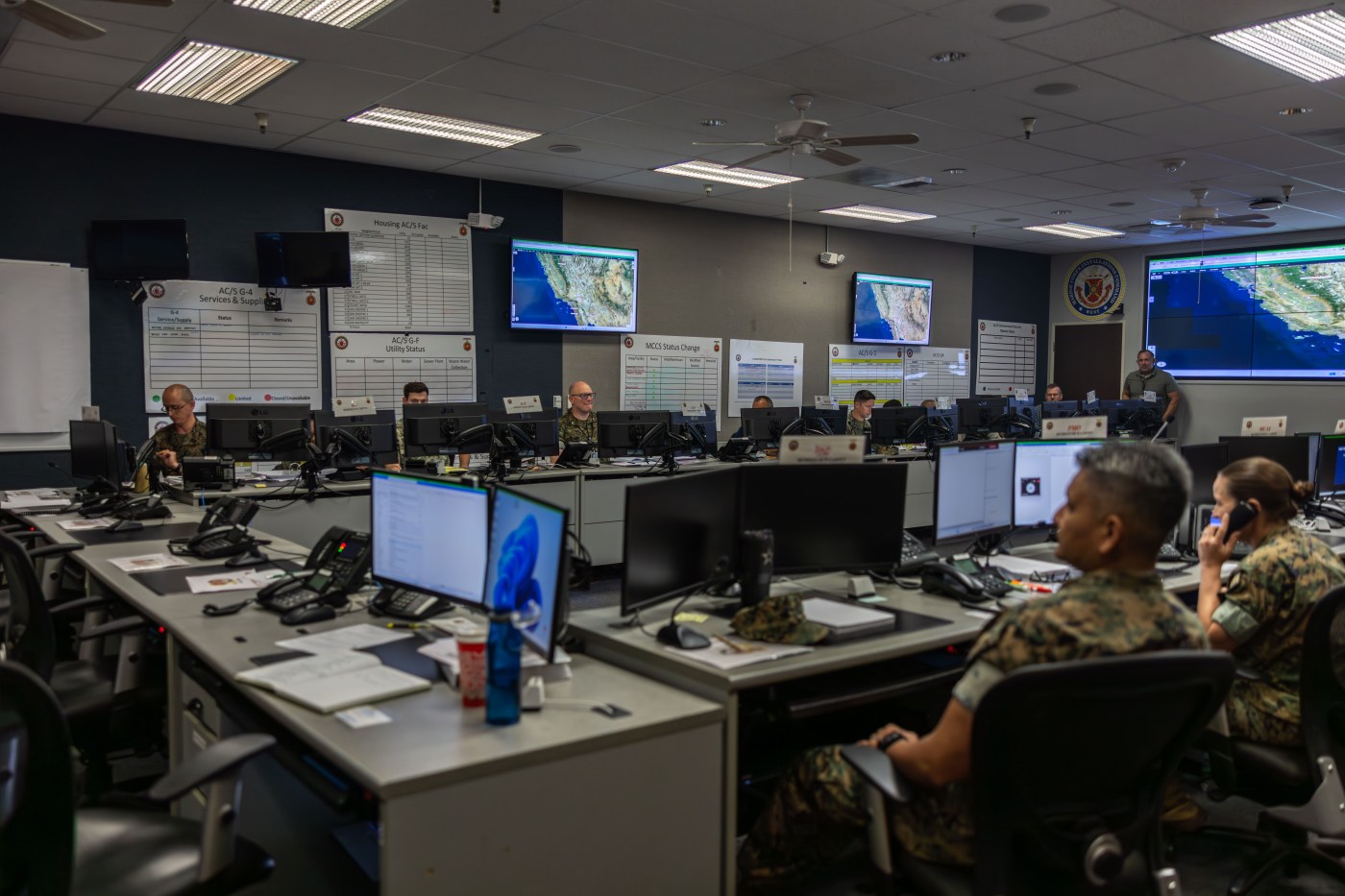Marines at Camp Pendleton are working through security breach and cyber attack scenarios and, for the first time this year, they are including local, state and federal partners in the “battle rhythm,” so everyone is prepared in the event a crisis hits Southern California.
As part of the annual exercise, which launched Monday, May 19, and continues through Thursday, the public might notice more emergency response teams around and on the base. There could also be delays on nearby roadways and more military maneuvering, including the sounds of live fire, near the coast and in the skies over Southern California.
Known as Semper Durus, the exercise focuses on regional protection and includes cooperation and information-sharing with local agencies in surrounding communities. It is being held at Camp Pendleton and other western Marine Corps bases and air station, including Marine Corps Air Station Miramar, Marine Corps Air Station Yuma, Marine Corps Logistics Base Barstow and Twentynine Palms.
On Tuesday morning, some short blasts and ground vibrations could be heard and felt in South Orange County, likely coming from the base, said Jeff Williams, a retired Marine who is the director of operations and plans division for MCI-West and is helping run the exercise.
The exercise is a sort of wargame between good and bad teams to ensure the protection of the bases, critical infrastructure and the residents living on the other side of the military gates, and that even if under attack, Marines could be deployed overseas if needed.
Williams said he is sort of a “conductor” who ensures the exercise’s overall design and the goal stay on course.
“We avoid getting into the ridiculous category, which is making stuff up for the sake of making stuff up,” he said.
Williams said the team of attackers — made up of reserve Marines — is much larger this year, which allows them to be more threatening and destructive as they try to wreak havoc across Camp Pendleton and the other bases. To prepare for the exercise, the reserve Marines analyzed each base’s weaknesses and where they could bring in the most problems.
For example, Camp Pendleton is close to the ocean, surrounded by many local communities with large populations, and has major arterials surrounding it. So, they used those factors to come up with disturbances, Williams said.
Last year’s exercise was the first to create non-choeographed attacks. Williams also said he and other planners realized in their after-action review that there needed to be more focus on collaboration with local, state and regional partners.
For example, Caltrans might be called on to help move Marines to the San Diego Naval Base if there were an attack to disturb the usual troop movement, he said. Or, what happens when critical infrastructure outside the base is threatened?
“If there’s a piece of critical infrastructure that we need help with, whether it’s a power node or communications node, we look to the (regional agencies) to help us with that,” he said.
Integrating these agencies into the exercise is not something the Marines have done before. And it added to the challenge, Williams said, because they couldn’t be allowed access if there were computers and paperwork with high security clearance.
“It presents challenges on how we integrate these agencies,” he said. “We’ve done it in an observer role, but this year, we’ve got the (agencies) as part of the battle rhythm.”
